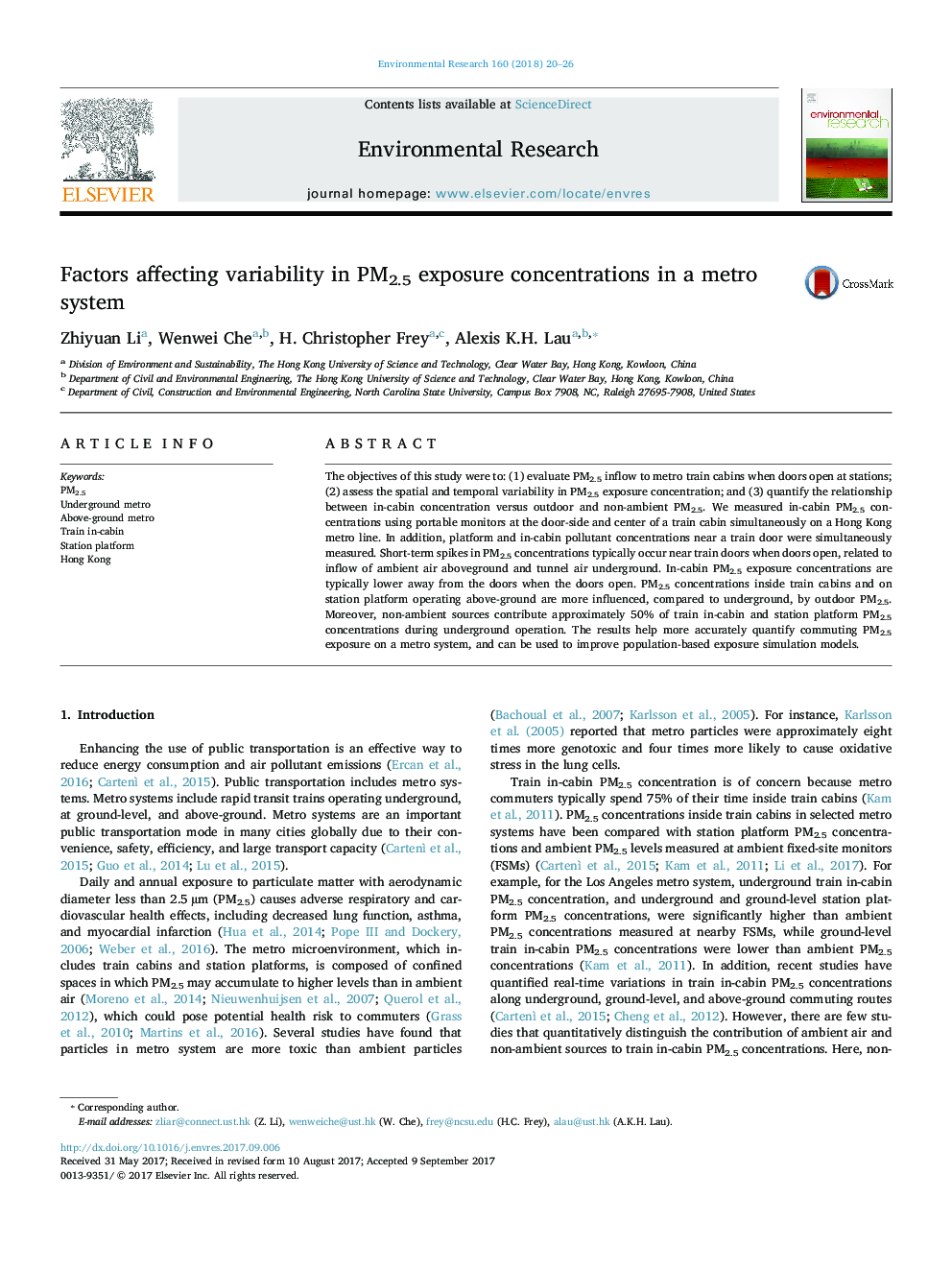| Article ID | Journal | Published Year | Pages | File Type |
|---|---|---|---|---|
| 5756094 | Environmental Research | 2018 | 7 Pages |
Abstract
The objectives of this study were to: (1) evaluate PM2.5 inflow to metro train cabins when doors open at stations; (2) assess the spatial and temporal variability in PM2.5 exposure concentration; and (3) quantify the relationship between in-cabin concentration versus outdoor and non-ambient PM2.5. We measured in-cabin PM2.5 concentrations using portable monitors at the door-side and center of a train cabin simultaneously on a Hong Kong metro line. In addition, platform and in-cabin pollutant concentrations near a train door were simultaneously measured. Short-term spikes in PM2.5 concentrations typically occur near train doors when doors open, related to inflow of ambient air aboveground and tunnel air underground. In-cabin PM2.5 exposure concentrations are typically lower away from the doors when the doors open. PM2.5 concentrations inside train cabins and on station platform operating above-ground are more influenced, compared to underground, by outdoor PM2.5. Moreover, non-ambient sources contribute approximately 50% of train in-cabin and station platform PM2.5 concentrations during underground operation. The results help more accurately quantify commuting PM2.5 exposure on a metro system, and can be used to improve population-based exposure simulation models.
Related Topics
Life Sciences
Environmental Science
Health, Toxicology and Mutagenesis
Authors
Zhiyuan Li, Wenwei Che, H. Christopher Frey, Alexis K.H. Lau,
